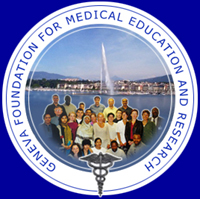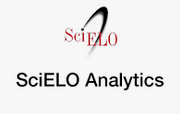A look at imaging diagnostic procedures from the medical education
Una mirada a los medios para diagnóstico por imágenes desde la educación médica
Leidelén Esquivel Sosa1, Yagima Fleites García2, Yurisandra Jiménez González3
1 "José Luis Miranda" University Pediatric Hospital. Villa Clara University of Medical
Sciences. Cuba. E-mail: leidelen@infomed.sld.cu
2 "José Luis Miranda" University Pediatric Hospital. Villa Clara University of Medical
Sciences. Cuba. E-mail: yagimafg@infomed.sld.cu
3 "José Luis Miranda" University Pediatric Hospital. Villa Clara University of Medical
Sciences. Cuba. E-mail: yurizandra@infomed.sld.cu
ABSTRACT
During the 20th century, diagnostic imaging was an extraordinary advance and is today an essential complementary method of clinical practice, with an impact on therapeutic procedures and medical education. The teaching implemented in the hospital centers should be aimed at achieving a correct balance between what is requested and what is really necessary, so it is necessary to develop strategies to build bridges between traditional radiology and new diagnostic methods and avoid their bad use; it is the purpose of the authors to communicate the need to achieve a teaching-learning process aimed at promoting a knowledge construction that enhances a meaningful learning on the subject, according to the expected comprehensive education.
MeSH: education, medical, clinical diagnosis, ancillary services, hospital, diagnostic services, health services.
RESUMEN
Durante el siglo XX el diagnóstico por imágenes tuvo un extraordinario avance y es hoy
un método complementario esencial de la práctica clínica, con incidencia en los
procedimientos terapéuticos y la educación médica. La enseñanza implementada en los centros
hospitalarios debe ir dirigida a lograr un correcto equilibrio entre lo que se solicita y lo realmente
necesario, por lo que se precisa la elaboración de estrategias para construir puentes entre la
radiología tradicional y los nuevos métodos
diagnósticos, y así evitar su incorrecta utilización;
es propósito de los autores comunicar la necesidad de lograr un proceso docente educativo encaminado a favorecer la construcción de un conocimiento que potencie un
aprendizaje significativo sobre el tema, en congruencia con la formación integral que se procura.
DeSC: educación médica, diagnóstico clínico, servicios técnicos en hospital, servicios
de diagnóstico, servicios de salud.
The scientific-technical revolution brought with it an extraordinary growth in many spheres, among them, health: it originated an enormous number of advances in the field of medicines, instruments, diagnostic procedures and new treatments that today have increased the well-being and life expectancy.1
Diagnostic imaging had an extraordinary advance during the 20th century. It is currently an essential complementary method of clinical practice. Consequently, it has a leading role in therapeutic procedures and medical education.2 But the capacity to produce and use technologies seems to run faster than the intention to reflect on their applicability. A more responsible and thoughtful implementation of technology in health is needed.
Physicians and medical students have always needed a good topographical understanding of the human anatomy before examining a patient. Today, this need is compounded by the understanding of X-ray sections, ultrasound, tomography and resonances, that is, morphological information revealed by the new imaging techniques.1
A teacher who uses more or less frequently the semiology or diagnostic procedures will have a similar effect in the training of its students, who, over the years, will perpetuate the good use or not of the new studies.
Generally the most recent doctors use less semiology and more complementary studies. The teaching that is implemented in the hospital centers must be aimed at achieving a correct balance between what is requested and what is really necessary.3 The semiology is irreplaceable: the clinical method will continue to be an indispensable tool to arrive at a correct diagnosis.
In the current context, some causes of misuse of imaging studies should be reviewed; it is not a question of obtaining a better image or all the images of the same pathology, but of making the diagnosis with the least cost and invasiveness.4 On the other hand, technology is ideally associated with high importance and quality, and becomes an independent and powerful health actor beyond its original objectives.5,6
An imaging study is useful when its result -positive or negative- contributes to modify the diagnostic-therapeutic behavior of the doctor or to confirm its diagnosis. In practice, repeating exams that have already been done, doing them in excess or with a certain frequency, facilitate the improper use of the technique.
In the current conceptions of imaging, the conventional study of X-rays in different systems, and very subtle, new diagnostic methods and their nomenclature are taken into account. To accompany this process requires the development of different strategies as bridges between traditional radiology and modern diagnostic methods to avoid misuse.4
Among the innumerable technical advances that modern medicine has made brilliant progress is ultrasound. Its use has increased by allowing observing, in real time, both the anatomy and the pathology of the human body. However, this great expansion brings with it several risks, the greatest of which is that it is intended that the ultrasound substitutes the clinician totally or partially in his work of obtaining a diagnosis by the classic methods of the clinical history-taking and physical examination, leaving almost all the work to the machine. In the long run, this would reduce the physician's clinical capacity and make it enter into a greater interdependence with the equipment.
The errors of interpretation given by the terminology used in sonographic studies such as echogenic, ecchymotic, hypoechogenic, or hypodense, hyperdense or isodense images on tomography, lead to a request for a new diagnostic study. Similar situation presents the use of Doppler and transcavity sonography where ignorance favors a new indication; so these novel technical resources are used beyond their benefit and sometimes even when they are dangerous.5
The authors of this research paper express their considerations on the use of imaging diagnostic procedures, and emphasize that the teaching-learning process should be aimed at promoting the construction of knowledge that enhances the scope of meaningful and congruent learning that matches the expected comprehensive education; for that reason, the programs of the subjects could be reinforced taking into account the ones they work the most in the caring centers, deepening in its indications and its interpretation.
The university must take care of the development of the competences to guarantee the suitability of its graduates.6 Adequate semiology aided by rational diagnostic studies should set a standard in Cuban medical education. The indiscriminate use of technology promotes excessive medicine. Its purpose is to help and not to harm. Reflecting and assuming this responsibility as educators guarantees a balance between clinical method and diagnostic procedures.
Declaration of interests
The authors declare no conflict of interest.
BIBLIOGRAPHIC REFERENCES
1. Hernández Pino M. La revolución cientifico-técnica y su impacto en las ciencias médicas [Internet]. La Habana: Universidad Virtual de Salud Manuel Fajardo; 2013 [citado 6 Sep 2016]. Disponible en: http://uvsfajardo.sld.cu/la-revolucion-cientifico-tecnica-y-su -impacto-en-las-ciencias-medicas
2. Hofmann BM. Too much technology. BMJ [Internet]. 2015 [citado 15 Sep 2016];(350):[aprox. 1 p.]. Disponible en: http://www.bmj.com/content/350/bmj.h705.full
3. Verghese A, Charlton B, Kassirer JP, Ramsey M, Loannidis JP. Inadequacies of physical examination as a cause of medical errors and adverse events: A collection of vigentes. Am J Med [Internet]. 2015 [citado 15 Ene 2017];128(12):[aprox. 14 p.]. Disponible en: http://www.amjmed.com/article/S0002-9343%2815%2900549-5/fulltext
4. Moguillansky S. Estado actual del diagnóstico por imagen en pediatría. Intramed [Internet]. 2009 [citado 22 Sep 2016]:[aprox. 14 p.]. Disponible en: http://www.intramed.net/contenidover.asp?contenidoID=63020
5. Soler Morejón CD, Cabrera Pérez Sanz E, Borjas Borjas F. Necesidades sentidas de aprendizaje en residentes noveles del Hospital Clínico Quirúrgico "Hermanos Ameijeiras". EDUMECENTRO [Internet]. 2015 [citado 20 Oct 2016];7(4):[aprox. 15 p.]. Disponible en: http://scielo.sld.cu/scielo.php?script=sci_arttext&pid=S2077-28742015000400002&lng=es
Submitted: October 21 2016.
Accepted: November 28 2017.
Leidelén Esquivel Sosa."José Luis Miranda" University Pediatric Hospital. Villa Clara
University of Medical Sciences. Cuba. E-mail: leidelen@infomed.sld.cu
Copyright (c) 2017 EDUMECENTRO










